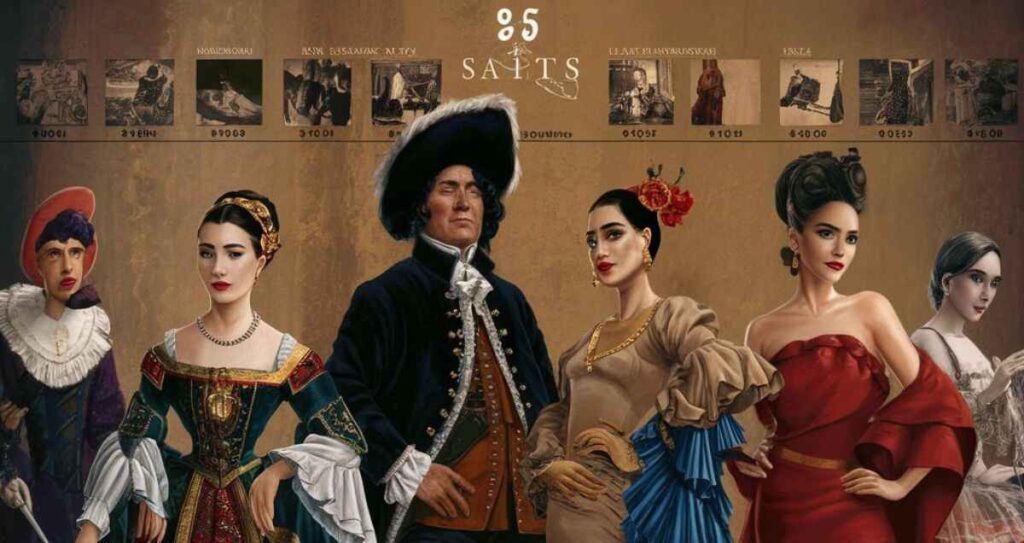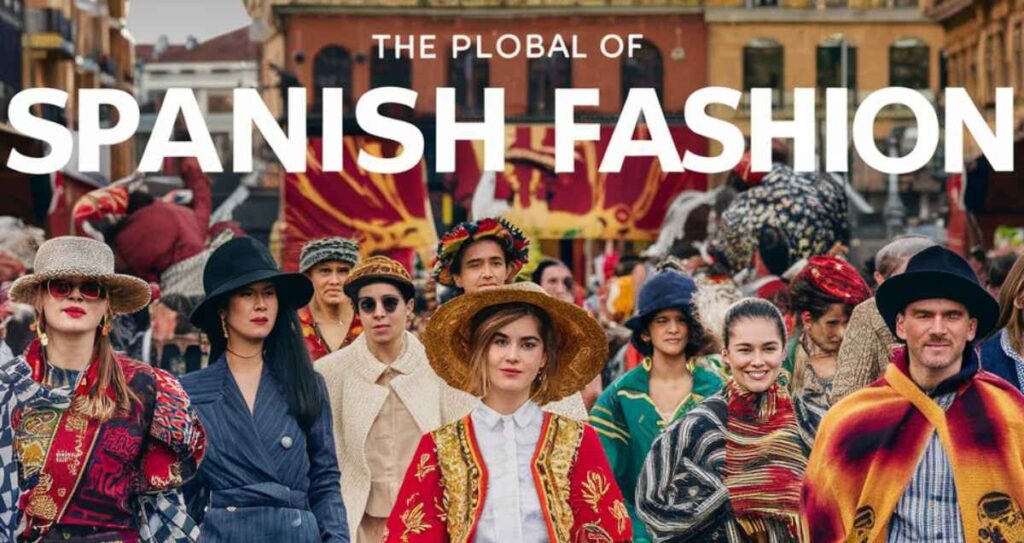Spanish Fashion refers to the unique style and clothing designs that originate from Spain, blending traditional elements with contemporary trends. Known for its vibrant colors, rich textiles, and innovative craftsmanship, Spanish fashion showcases the country’s cultural heritage and artistic flair.
Imagine stepping into a world where every garment tells a story—Spanish fashion invites you to experience a tapestry of colors, textures, and cultural influences. From the iconic flamenco dress to modern streetwear, this fashion scene reflects Spain’s rich history and vibrant spirit.
Spanish fashion combines Moorish and Renaissance influences, creating a vibrant, modern aesthetic. Designers like Cristóbal Balenciaga and Manolo Blahnik inspire with their timeless creations, while today’s trends focus on sustainability and bold styles.
The Historical Roots of Spanish Fashion

A Blend of Cultures
Spanish fashion is a tapestry woven from various cultural influences. The country’s history, marked by the Roman Empire, the Moors, and later, the Catholic Monarchs, has left an indelible mark on its clothing styles. Traditional garments like the flamenco dress and traje corto reflect this rich history. Each piece tells a story, representing not just aesthetics but also cultural heritage.
Key Historical Influences:
- Moorish Influence: The intricate patterns and vibrant colors seen in Spanish textiles can be traced back to the Moorish occupation, which introduced luxurious fabrics and ornate designs.
- Renaissance: The Renaissance period brought about a renewed interest in art and culture, influencing fashion with elaborate embroidery and luxurious materials.
- Modernism: The early 20th century saw the rise of modernist designers who began to blend traditional styles with contemporary cuts, paving the way for today’s fashion landscape.
Iconic Spanish Designers

Pioneers of the Fashion World
Spain boasts a rich roster of designers who have made significant contributions to both local and international fashion. Their innovative styles continue to inspire new generations of fashion enthusiasts.
Notable Designers:
- Cristóbal Balenciaga: Often regarded as one of the most influential designers of the 20th century, Balenciaga revolutionized women’s fashion with his sculptural designs and innovative use of fabric. His legacy endures in modern fashion houses that draw inspiration from his work.
- Manolo Blahnik: Renowned for his exquisite footwear, Blahnik’s designs blend artistry and functionality. His iconic stilettos have graced the feet of celebrities and fashionistas alike.
- Pedro del Hierro: Known for his elegant, timeless pieces, del Hierro’s work embodies the essence of Spanish chic, combining tradition with modernity.
Emerging Voices
The new generation of designers is redefining Spanish fashion by embracing sustainability and inclusivity. Brands like Palomo Spain and Desigual are breaking boundaries with bold, innovative designs that celebrate individuality.
Current Trends in Spanish Fashion
A Fusion of Tradition and Modernity
Spanish fashion is a living art form that evolves while honoring its roots. Currently, several trends dominate the scene, showcasing a blend of traditional elements and contemporary flair.
Trending Styles:
- Sustainable Fashion: As the global fashion industry shifts towards sustainability, many Spanish designers are leading the charge. Brands are increasingly using eco-friendly materials and ethical production methods.
- Streetwear Influence: Urban styles are making their mark, with streetwear brands incorporating local influences. Think oversized silhouettes paired with traditional Spanish textiles for a unique look.
- Vibrant Colors: True to its heritage, Spanish fashion embraces bold colors and patterns. From sunny yellows to deep reds, these hues reflect the country’s lively spirit.
Fashion Events and Festivals
Spain hosts numerous fashion events that highlight its dynamic scene. The Madrid Fashion Week and 080 Barcelona Fashion serve as platforms for both established and emerging designers to showcase their collections. These events draw attention to the creativity and craftsmanship that define Spanish fashion.
The Global Impact of Spanish Fashion

International Recognition
The influence of Spanish fashion extends beyond borders. Designers like Balenciaga and Blahnik have gained international acclaim, and brands like Zara have transformed the global retail landscape.
Key Points of Influence:
- Fast Fashion: Spanish retailer Zara has pioneered the fast-fashion model, making high-style accessible to a broader audience. Its approach to rapid production and trendy designs has changed how consumers shop worldwide.
- Cultural Exports: Spanish fashion is not just clothing; it’s a cultural export that encapsulates the spirit of Spain. This is evident in the global popularity of flamenco-inspired designs and traditional garments.
The Role of Social Media
Social media platforms have become powerful tools for Spanish designers to reach global audiences. Influencers and fashion bloggers showcase Spanish styles, making them accessible to a wider demographic. Instagram and TikTok play pivotal roles in promoting trends and establishing brand identities.
A Closer Look at Spanish Fabrics and Techniques
Rich Textiles and Craftsmanship
The quality of fabrics and the artistry involved in creating garments are hallmarks of Spanish fashion. From luxurious silks to handcrafted embroideries, each piece reflects meticulous attention to detail.
Notable Fabrics:
- Cotton: A staple in Spanish textiles, known for its comfort and breathability.
- Silk: Often used in formal wear, adding an air of elegance to garments.
- Linen: Perfect for the warmer climates, linen’s lightweight nature makes it ideal for summer fashion.
Traditional Techniques
Spanish artisans employ various techniques that have been passed down through generations. Techniques such as embroidery, weaving, and dying are integral to creating authentic Spanish garments.
| Technique | Description |
|---|---|
| Embroidery | Intricate designs stitched onto fabrics, often telling a story. |
| Weaving | Traditional methods used to create fabrics with unique patterns. |
| Dyeing | Natural dyes sourced from local plants are often used to achieve vibrant colors. |
Conclusion: The Future of Spanish Fashion
Spanish fashion continues to thrive, embracing both its rich history and the future. As designers innovate and respond to global trends, they remain rooted in the traditions that make Spanish fashion unique. The fusion of sustainability, cultural heritage, and modern influences paints a promising picture for the industry.
In summary, whether you’re exploring the streets of Madrid or browsing online shops, Spanish fashion offers a delightful blend of tradition and innovation. Its vibrant colors, intricate designs, and passionate craftsmanship make it a significant player in the global fashion arena. So, the next time you don a piece of Spanish clothing, remember, you’re not just wearing a garment—you’re embracing a rich cultural legacy.
Welcome to FashionTrista! I’m David Mark, and I’m excited to share my passion for fashion with you. At FashionTrista, we offer a curated selection of the latest trends, style tips, and fashion advice to keep you ahead of the curve. Whether you’re looking for outfit inspiration or expert guidance, FashionTrista is your go-to resource for all things fashion. Explore with us and redefine your style journey.
